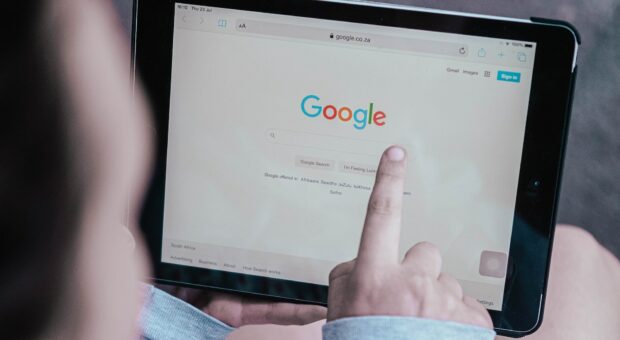
When personal computing first arrived on the business desktop, there was a lot of talk about bits and bytes, but not much buzz about its real world application. The DNA of any company is all about ROI, but the PC vendors at the time were all about RAM.
Just as personal computing soon left its gee whiz techy fascination in the dust and morphed into an honest-to-goodness business tool, Search Engine Marketing and SEO are also evolving. In many ways this evolution to “performance digital marketing” is about a return to its Mad Men marketing (and advertising) roots.
At the same time, much of this Back to the Future movement centers on the creation of web “content”. But the definition of content, in terms of what it is and what it does, has been about as clear as mud. Is content informational? Is it marketing? Editorial? PR? Advertising?
Yes!
No, you are NOT in the content publishing business
Why should any business spend its resources on creating content for its website, blog, or social media platforms? You’re not in the publishing business, you’re selling the world’s best widgets, and you need to grab a bigger share of the market. For years, you have used traditional advertising methods including direct mail, print, TV, radio, events, and email to build awareness and generate qualified leads and sales.
More than likely, you have added pay per click (PPC) advertising and remarketing to the mix. And while these line drive, straight-up advertising methods have contributed to your business goals, each one has its particular strength and weakness. Some have greater reach, but are not easy to measure in terms of success. Some have low CPM (cost per thousand) impression costs, but the cost of broadcast production and media flights can be breathtaking. Some media, such as print, are experiencing steep declines in circulation, and the audience is aging its way out of many businesses’ target demos. And while many companies value PPC for its ability to get leads and generate conversions quickly, it too shares the same limitation most media have; when you stop buying ads, you turn off the spigot.
So, how does content fit into this mix? And even if you embrace the concept of information-rich content as a marketing or public relations tool, how the hell can it be used for advertising?
Content is advertising
Wha…? Content is advertising? “Blasphemy!” some say, while others raise their eyebrows and lean in. David Ogilvy, the original Mad Man and the proverbial godfather of advertising, believed that a good advertisement did not draw attention to itself. He also believed that what you say is more important than how you say it.
“I do not regard advertising as entertainment or an art form, but as a medium of information,” said Olgivy. “The more informative your advertising, the more persuasive it will be.”
Granted, great content is all about useful information—but is it persuasive? And should that persuasion generate a lead or a sale? Isn’t content about building trust and laying off the hard sell? Again, the answer is “yes!” … but the big question is how?
Converting web traffic to revenue and leads
One way to generate conversions is to craft the blog or web content in ways that match the intent of the searcher. If the search term used is “what is a widget” the searcher is in an information gathering phase. To build a web page that is made “visible” to the search engines, you begin by optimizing the copy on that page around that target “what is a widget” keyword phrase along with others closely related to it. The search engines see that this article is answering the “what is a widget” question because there are 1,000 or more words of copy about that subject.
The result of this effort, along with appropriate link building and social signaling (Tweets, Facebook and LinkedIn) is that the search engines reward the content provider with better “visibility”. Also known as “ranking”, higher visibility places the link and page description on the first ten Search Engine Results Pages (SERPs). Other variables, including competition for that term, determine how well your target keyword will rank. The holy grail of visibility is to be on page one of the SERP rankings because that is THE way to generate website traffic.
Of course, now that you’ve got that visit, you need to make sure that there is some call to action (CTA) on the landing page, and that it relates to the search term “intent” of the visitor. In this case, the intent of the visitor is to learn more about widgets, and that means that they are probably not ready to make a purchase decision. Any CTA on this page should invite the visitor to learn more by subscribing to a newsletter or email updates.
On the other hand, if the search term used is “where can I buy a widget”, and your business’ landing page is optimized and visible for that term, the call to action on that page should offer clear “buy now” conversion options. These CTAs can be in and around the copy content. In this case, the content is doing some of the heavy lifting you normally associate with advertising, but in something similar to the time-tested tactic known as an advertorial (an advertisement in the form of an editorial). Once you have the attention of your prospective customer, make sure your offer is solid and your products or services are priced realistically. If the competition is selling a dozen ballpoint pens for $9, all the traffic in the world will not help you sell the same or similar pens for $50.
“There is no need for advertisements to look like advertisements,” explains Olgivy. “If you make them look like editorial pages, you will attract 50% more readers.”
Readers? OK, but print is dead… right? Yep, sad but true, it is. But, the traffic on the Internet, powered by a tsunami of tablets, smartphones, laptops and desktop computers is surging–and online sales are surging right along with it. According to the U.S. Department of Commerce, e-commerce 2012 revenue increased by 15.8% to $225.5 billion from $194.7 billion. Forrester Research forecasting predicts that e-commerce sales in the U.S. could hit $250 billion by 2014. By comparison, as recently as 2009, online sales in the U.S. were just $155.2 billion.
You want some of this?
Let’s rephrase that – you WANT some of this! This is where web-based content can shine like the proverbial traffic-building beacon it is. Not only can great content attract people to your website and build brand awareness, compelling content will help you sell.
OK, so you can see how great content can help advertise your business, but how does it compare with traditional advertising and the newer stuff like PPC?
For one thing, web-based content is the gift that keeps on giving. Unlike a TV or radio ad, content will continue to build traffic long after it’s paid for. In addition, many of the new landing pages can be used for PPC campaigns, and all the web content you create becomes a tangible business asset. In this way, the investment you make in content is more like a 401k plan or an annuity than an expense. Most importantly, the more quality content you add, the more authority your site will have for your market niche, and the search engines will reward your efforts with greater visibility. And the grand prize of visibility is to be on page one of the search results when someone types in “world’s best widgets”. If you truly have the world’s best widgets and the pricing is right and profitable, you will appreciate the advertising power of compelling content and performance digital marketing with every bank deposit.
About VONT Performance Digital Marketing
At VONT we believe that change is the only constant in the digital world – and that excites us. When tools and environments are constantly changing, new opportunities to help our clients achieve success are constantly arising. Each new advertising technology, social platform, or design approach allows us to improve on the results we achieve for our clients.
We believe in this idea of continual fine-tuning so much that we named our company VONT, which means to achieve exponential improvement in incremental steps. It is our core belief, and the reason why we are not simply a web design company or simply a digital advertising agency, but rather a long-term, single source partner providing a comprehensive array of web development and digital marketing capabilities.
In short, we’re here so that our clients achieve success in the ever-changing digital world. If you’d like to learn more about VONT and the work we’ve done with our client partners, visit our Work page. Or, if you have a question, contact us. We’ll get right back to you!

